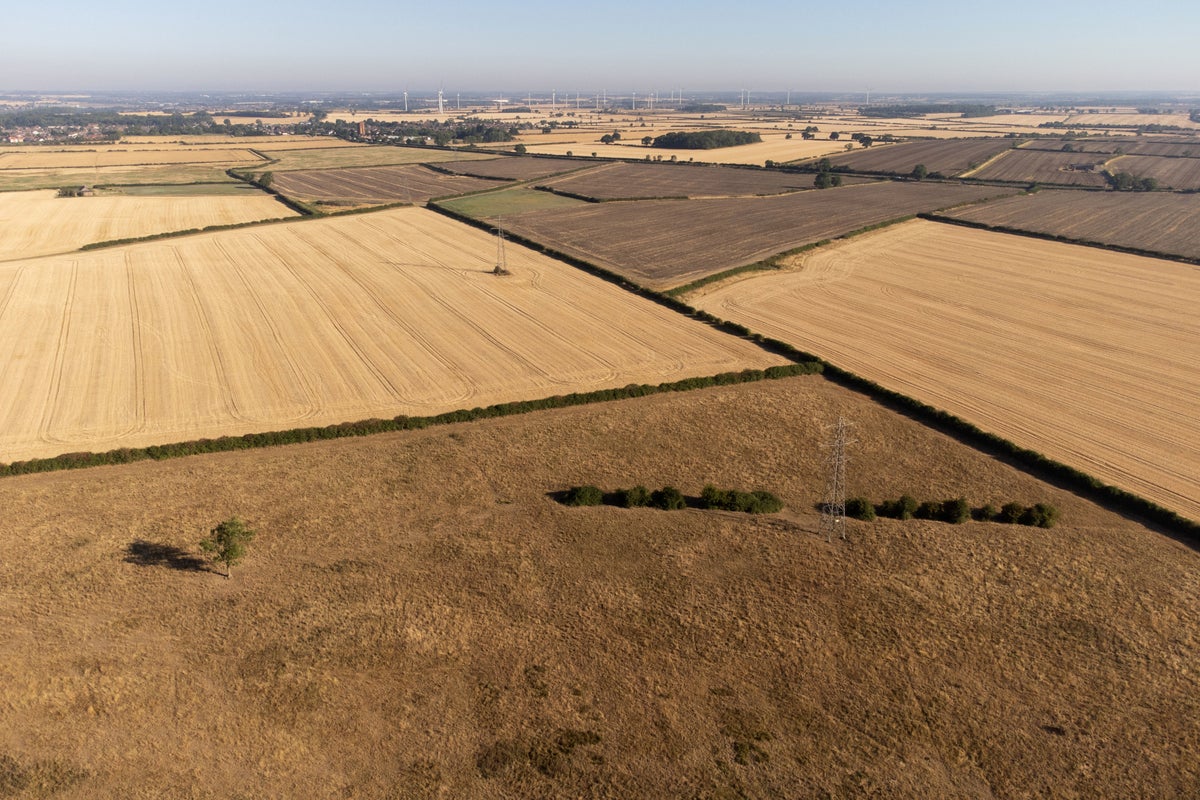[ad_1]

A drought has been declared in parts of England as the country swelters in a second major heatwave in weeks.
The National Drought Group met on Friday, bringing together officials from the government, water companies, Met Office and National Farmers Union among others, where the Environment Agency informed them that the threshold had been met to move parts of south west, southern, central and east England into drought.
Droughts are declared for local areas, rather than nationally, and the Environment Agency is responsible for determining whether an area is officially considered to be in drought or not.
It is also responsible for protecting the environment during a drought and overseeing the actions water companies take to ensure the public supply of water.
Until Friday, most of England officially was in “prolonged dry weather” status – the first of the Environment Agency’s four stages of dry weather.
The next stage is drought, before severe drought and recovering drought.
What is a drought?
A drought occurs when a period of low rainfall creates a shortage of water, reducing water supplies to users.
England has had its driest start to the year since 1976 and the driest July since 1935. Millions of Britons are already subject to hosepipe bans and a village in Oxfordshire had to rely on tankers and bottled water when it ran out of water this week.
The possible impacts of drought include stress on public and private water supply sources, reduced agricultural yields, wildfires, and long-term harm to habitats and wildlife.
What happens when a drought is declared?
A declaration does not necessarily trigger specific government interventions and it does not legally oblige water companies to impose hosepipe bans.
Water companies have drought plans that they will follow to manage the impacts of the drought. These are guided by local factors including reservoir levels, demand and weather forecasts.
These could see water companies impose more restrictions on non-essential domestic and commercial water use, including by introducing hosepipe bans or reducing mains water pressure to slow down supply.
Water companies can also use drought permits or drought orders to take more water from rivers during the drought, or to restrict water use of other extractors, such as farmers.
Meanwhile, the Environment Agency’s main actions include processing and enforcing drought permits and orders, responding to fish and pollution incidents and introducing restrictions on canals and rivers where needed.
[ad_2]
Source link














